Welcome Autumn: See What’s to Come
Posted in Gardens and Collections on September 22 2009, by Plant Talk

Inside The New York Botanical Garden
Posted in Gardens and Collections on September 22 2009, by Plant Talk
Posted in Gardening Tips, Gardens and Collections on September 18 2009, by Plant Talk
Black Spot and Downy Mildew Look Similar but Are Different
 |
Peter Kukielski is the Peggy Rockefeller Rose Garden Curator. |
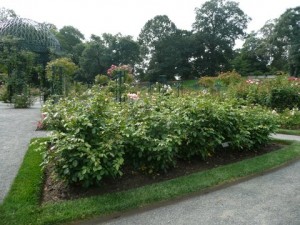 Few flowering plants match the beauty, versatility, or popularity of the rose. Numerous varieties offer a wide range of growth habits and floral colors. With the proper care, hundreds of rose varieties will bloom from early spring through late fall. Although there are many new varieties on the market that are highly disease resistant, some of the older varieties present a challenge, and disease control is critical for maintaining healthy roses.
Few flowering plants match the beauty, versatility, or popularity of the rose. Numerous varieties offer a wide range of growth habits and floral colors. With the proper care, hundreds of rose varieties will bloom from early spring through late fall. Although there are many new varieties on the market that are highly disease resistant, some of the older varieties present a challenge, and disease control is critical for maintaining healthy roses.
I get asked quite often to identify pests and diseases either by e-mail or by visitors to the Rose Garden. This year I got many questions regarding two specific rose diseases that are triggered by excessive humid and/or wet conditions: black spot and downy mildew.
We’ve heard the phrase “a rose is a rose is a rose.” Could one also say “a spot is a spot is a spot”? In regard to roses, the answer is “no.” These two very different types of spots can cause severe damage in different ways.
You can tell the two diseases apart by their symptoms: Black spot has circular spots and starts at the base of the plant and works its way up the plant, while downy mildew has angular spots but attacks the new growth at the top of the bush and works its way down the plant.
Posted in Gardens and Collections, People on May 14 2009, by Plant Talk
 Carol Capobianco is Editorial Content Manager at The New York Botanical Garden.
Carol Capobianco is Editorial Content Manager at The New York Botanical Garden.
On the surface, one would expect that the dozens of volunteers who answered the call to help plant 1,000 trees and 50 shrubs in the Botanical Garden’s Native Forest April 24 and 25 did so in observance of Arbor Day or Earth Week or Hands On New York weekend or just because it was an excuse to be outside on a warm, sunny spring day.
But dig deeper—in a figurative way, that is, as we were all instructed by our deft leader Forest Gardener Anthony Copioli to dig only as deep as each tree’s root system to keep the root flare above the soil—and you’ll find that those worthy causes for the most part didn’t factor in to the motivational equation. What inspired these folks, instead, was much earthier: They came because they love gardening, the outdoors, and the Botanical Garden, some from as far back as childhood. There is something about touching the soil that touches the soul. Simply, they needed to be out here.
Take Garden Member Marco Burmester, for instance. He grew up on a farm in northern Germany and has missed the woods and gardening since he moved to New York City four years ago. He took the day off from his banking job for the opportunity to plant a tree once again. “I used to do this in my childhood; I’ve planted hundreds of trees in my lifetime.”
Ellen Alger of Montvale, N.J., and Irene Ryan of Nanuet in Rockland County, rode their bikes to the Garden as kids growing up in the area. “We received so much from the Garden that it’s nice to give back and to put our mark on it,” said Ellen, who is a Garden Member.
The two became planting buddies for the day with Board Member Julie Sakellariadis, who lives in Manhattan and visits the Garden weekly to walk the grounds. “I look for any excuse to come up here, to be outdoors with no phones ringing. There’s nowhere in the world so wonderful as The New York Botanical Garden.”
The other volunteers would agree. “This is an oasis; it’s awesome that it exists in this urban area,” said Paula Lawrence, Vice President of The Starr Foundation, a Garden Leadership Donor. She joined five other co-workers—half the Foundation staff—to dig holes, cajole tangled pot-bound roots, and plant with a purpose some of the hundreds of trees, provided through the MillionTreesNYC program, that would help in the restoration of the Native Forest.
Posted in Exhibitions, Gardens and Collections on April 29 2009, by Plant Talk
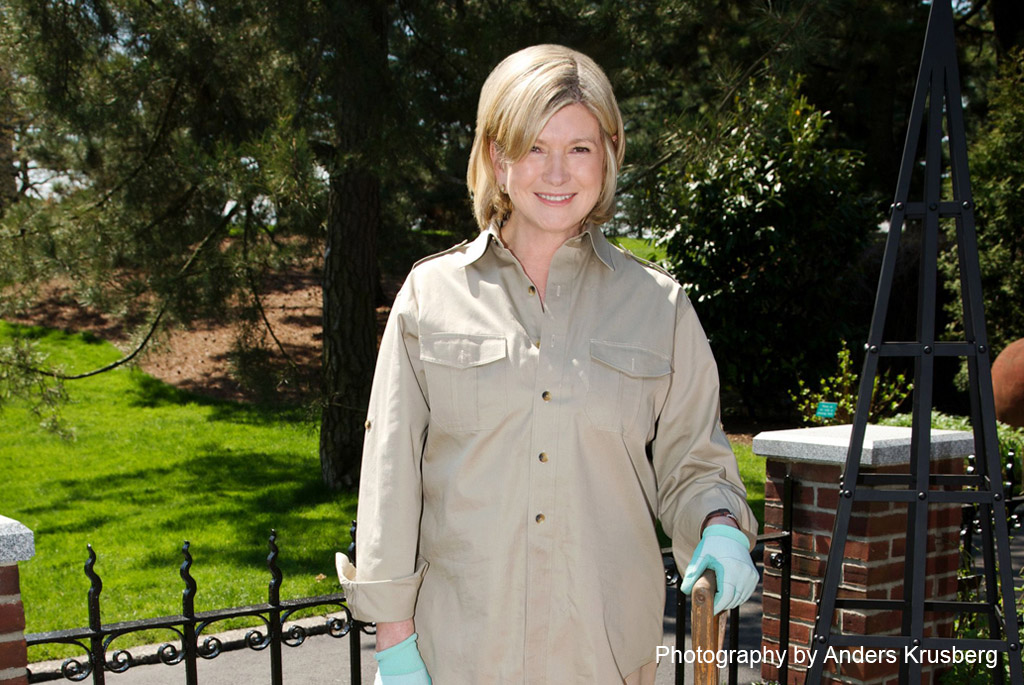
Martha Stewart and her team visited The New York Botanical Garden on April 25 for a ceremonial planting of Martha Stewart’s Culinary Herb Garden, which will be one of the many highlights of The Edible Garden, the upcoming summer-long celebration of growing great food. Click here to download the site plan for the garden.

Margaret Falk, Associate Vice President for Landscape, Gardens, and Living Collections, and Kristin Schleiter, Curator of Outdoor Gardens and Herbaceous Collections, plant the Culinary Herb Garden designed by Martha Stewart and her team of gardening experts.

Bruce Dryden, Assistant Foreman of Gardeners, plants Italian parsley and an assortment of other herbs from around the world in Martha Stewart’s Culinary Herb Garden. The newly planted herb garden is just one of the many highlights of The Edible Garden, from June 27 to September 13.
Posted in Gardens and Collections on April 21 2009, by Plant Talk
 |
Katie Bronson is Gardener in the Everett Children’s Adventure Garden. |
Horticulture staff on the Outdoor Gardens crew welcome spring in the Everett Children’s Adventure Garden by dressing the five animal topiaries—three caterpillars, a ladybug, and a frog—in colorful Viola coats. The topiaries delight visitors year round but seem to bring a special joy after a long winter and before the spring bulb and flowering tree season gets into full swing.
What exactly does it take to make a caterpillar bloom? Many hands, many plants, and a lot of time.
Although it takes about seven days to plant all five forms, the process starts months in advance. During the summer, we drew designs and selected the varieties of violas to use. The staff at the Nolen Greenhouses for Living Collections started growing the plants in late fall to be in flower and ready to plant by mid-March. Turning a drawn design into a planting involves a little bit of math and a lot of eyeballing. As we do the installation, we keep track of how many plants of each variety we have and how many we have used to ensure there are enough to complete the design as planned.
Before planting, the topiaries look like soil-filled wire cages in the shape of an animal. Planting in the steel structure is pretty much like planting in the ground except that sometimes we are standing on ladders and sometimes we have to lie on our backs to plant. To achieve an instant effect, the plants are planted much closer together than they would be in the ground.
Soil knives are our tool of choice, because they are flat and narrow and cause less soil to fall out of the structure as we dig. We don’t usually need to replace the soil that falls out, because the new plants take up that space—as the plants grow, they root into the structure. Many plants are planted practically upside down in the structure. When gravity wants to pull our plants out of place, we use landscape staples to pin the root balls.
After planting is completed, areas that have lost soil are stuffed with damp sphagnum moss to keep the roots from drying out. Irrigation systems are installed inside each structure, but we water by hand right after planting and then usually on a schedule of once or twice a week to supplement the daily irrigation.
Can you guess how many violas it takes to make a caterpillar bloom? To find out the answer…
Posted in Gardens and Collections on April 16 2009, by Plant Talk
 |
Jan Johnsen is an instructor of landscape design in the Garden’s Continuing Education program and a past recipient of the Instructor of the Year award. She is a principal of the firm Johnsen Landscapes & Pools. |
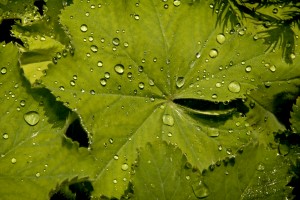 It’s a sunny spring morning; the air is crisp and the sky is blue. I am on my way to teach a class at The New York Botanical Garden and, as always, am reveling in the lovely green setting that surrounds me. This particular morning I notice the water drops glistening atop the blades of grass and remember that the season of dew watching is upon us.
It’s a sunny spring morning; the air is crisp and the sky is blue. I am on my way to teach a class at The New York Botanical Garden and, as always, am reveling in the lovely green setting that surrounds me. This particular morning I notice the water drops glistening atop the blades of grass and remember that the season of dew watching is upon us.
Dew appears when the days are warm, the nights cool, and the air is moist. The earth cools overnight, chilling the air, and like magic, drops of water appear out of nowhere and settle on whatever is near the ground. But it does not last long. By late morning the dew evaporates and our momentary watery celebration of spring is over.
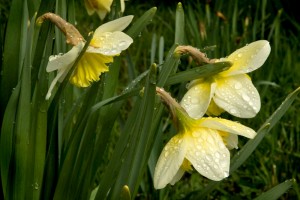 Spring flowers are lovely when covered in dew. The blossoms of daffodils, pansies, clover, dianthus, phlox, and euphorbia sparkle in the morning sun with the jeweled globes of water perched lightly upon their petals. One of the best dew catchers is lady’s mantle (Alchemilla mollis). Alchemilla is Arabic for “little magical one” and refers to the healing properties of the water that collects on its wide, crinkled leaves.
Spring flowers are lovely when covered in dew. The blossoms of daffodils, pansies, clover, dianthus, phlox, and euphorbia sparkle in the morning sun with the jeweled globes of water perched lightly upon their petals. One of the best dew catchers is lady’s mantle (Alchemilla mollis). Alchemilla is Arabic for “little magical one” and refers to the healing properties of the water that collects on its wide, crinkled leaves.
The idea that dew contains healing powers was echoed in the 1930s by Dr. Edward Bach, an English physician who developed the famed Bach flower remedies. He surmised that the dew sitting upon a blossom absorbed the healing energies of that flower. He reasoned that ingesting a small amount of a flower’s sun-drenched dewdrops could rebalance key emotional energy patterns that were behind many people’s illnesses.
So, when you walk out among the Garden’s tranquil spring flower borders, look closely and see how the dewdrops, nature’s ephemeral wonder, act like little crystal balls, magnifying the early morning sunlight. Herein lies the magic of dew.
Posted in Gardens and Collections on April 2 2009, by Plant Talk
 |
Jessica Blohm is Interpretive Specialist for Public Education. |

Peter Kukielski, Curator of the Peggy Rockefeller Rose Garden, stakes and prunes this tree-form shrub rose named Rosa Home Run™. Spring is the time Peter cuts back the dead wood to promote flower production. This rose begins producing beautiful red roses in June and continues to bloom all summer long.


Gardeners Ken Molinari, top, and Jonathan Riggers prepare the beds for planting David Austin roses in a new English border—just one of many new additions to the Rose Garden this year in an effort to make the collection more disease-resistant.
Posted in Gardens and Collections, People on February 19 2009, by Plant Talk
 Carol Capobianco is Editorial Content Manager at The New York Botanical Garden.
Carol Capobianco is Editorial Content Manager at The New York Botanical Garden.
I bumped into Peter Kukielski, Curator of the Peggy Rockefeller Rose Garden, the other day in the hallway—we don’t often see Peter indoors. It was one of the coldest days of the year and Peter’s cheeks were rosy—but so was his outlook for a new rendition of the Rose Garden.
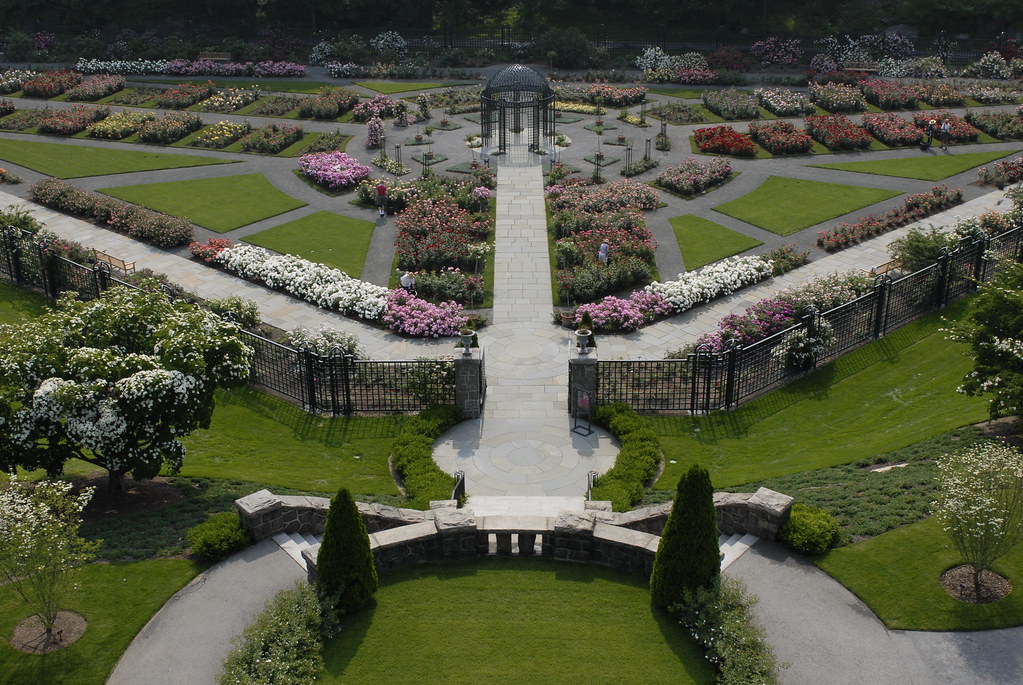 Peter has been working on a multi-year dream to transform his charge into the world’s largest chemically-free, low-maintenance rose garden. A tall order, for sure, since roses have a reputation of being among the most chemically-dependent flowers in existence.
Peter has been working on a multi-year dream to transform his charge into the world’s largest chemically-free, low-maintenance rose garden. A tall order, for sure, since roses have a reputation of being among the most chemically-dependent flowers in existence.
But during these months when our Rose Garden is in its winter stupor, Peter has been scouring the world (virtually, not physically) for the finest disease-resistant varieties in a major step to the conversion. Not only did he find what he was looking for, but all the growers donated the plants. Beginning in March, Peter will oversee the planting of 880 new, hardy roses to replace the more than 1,100 high-maintenance roses removed last fall, about one-third of the Rose Garden’s inventory. The new varieties bloom all season long and are easy to care for.
Peter’s passion for the project, his extensive expertise, and his willingness to experiment add up to an interesting season to come for the Rose Garden. Stay tuned for the announcement of its reopening this spring and be sure to come and visit.
Posted in Gardens and Collections on February 11 2009, by Plant Talk
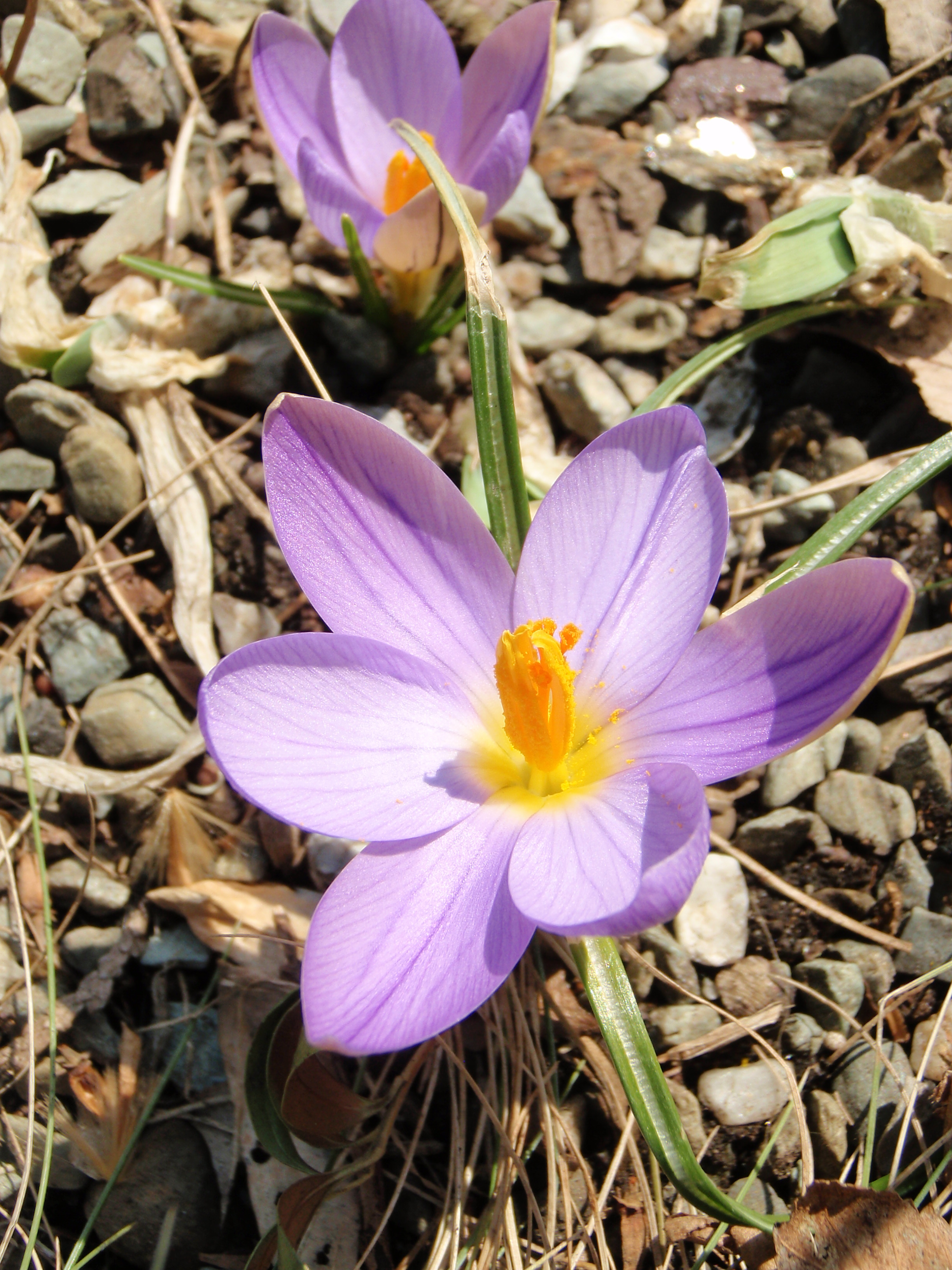
Posted in Gardens and Collections on February 11 2009, by Plant Talk
 |
The Botanical Garden’s living collections is among the greatest in the world and contains more than 1 million plants. Jon Peter, Plant Records Manager, periodically shines the spotlight on a particular species that can be found within our 250 acres. |
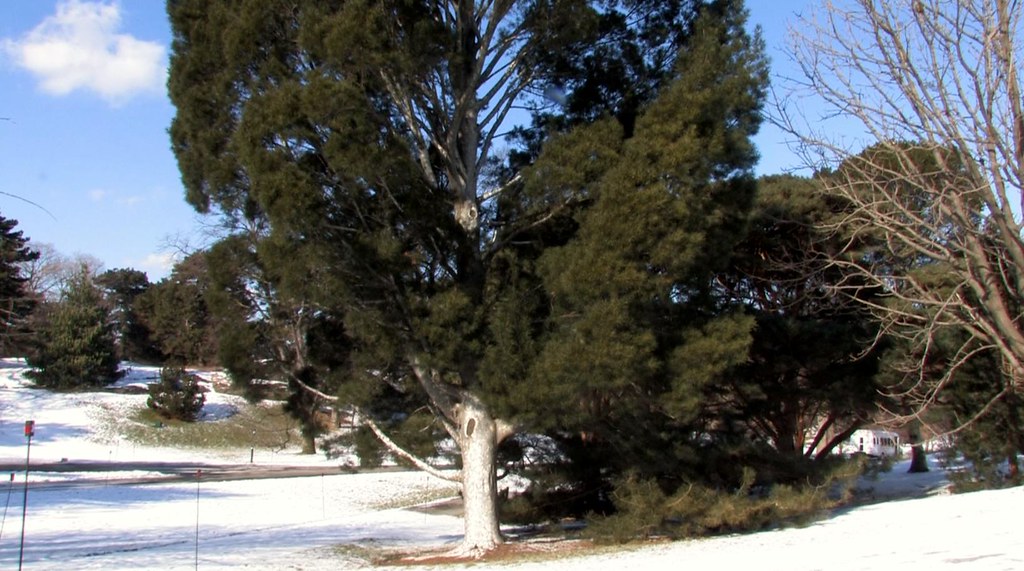
Botanical Name: Pinus bungeana
Common Name(s): Lacebark pine; Bunge’s pine
Family Name: Pinaceae (Pine family)
Native Range: Central to northern China
USDA Hardiness Zones: Zone 4–8
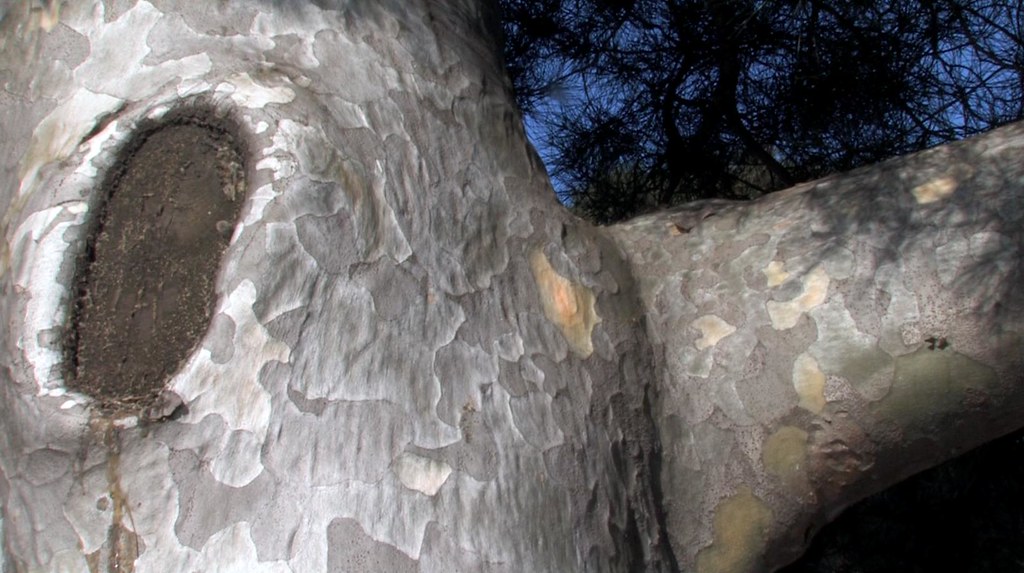 Location(s) within NYBG: By Reflecting Pool, Ross Conifer Arboretum
Location(s) within NYBG: By Reflecting Pool, Ross Conifer Arboretum
Site Requirements: Prefers full sun and is adaptable to many soil types as long as it is well- drained soil.
Interesting Note: A slow-growing pine tree that has many striking features, which help to make this a desirable tree for the home landscape. The best feature is the camouflage bark. which exfoliates with age to create beautiful colors and patterns. This feature is exceptional against a backdrop of freshly fallen snow.